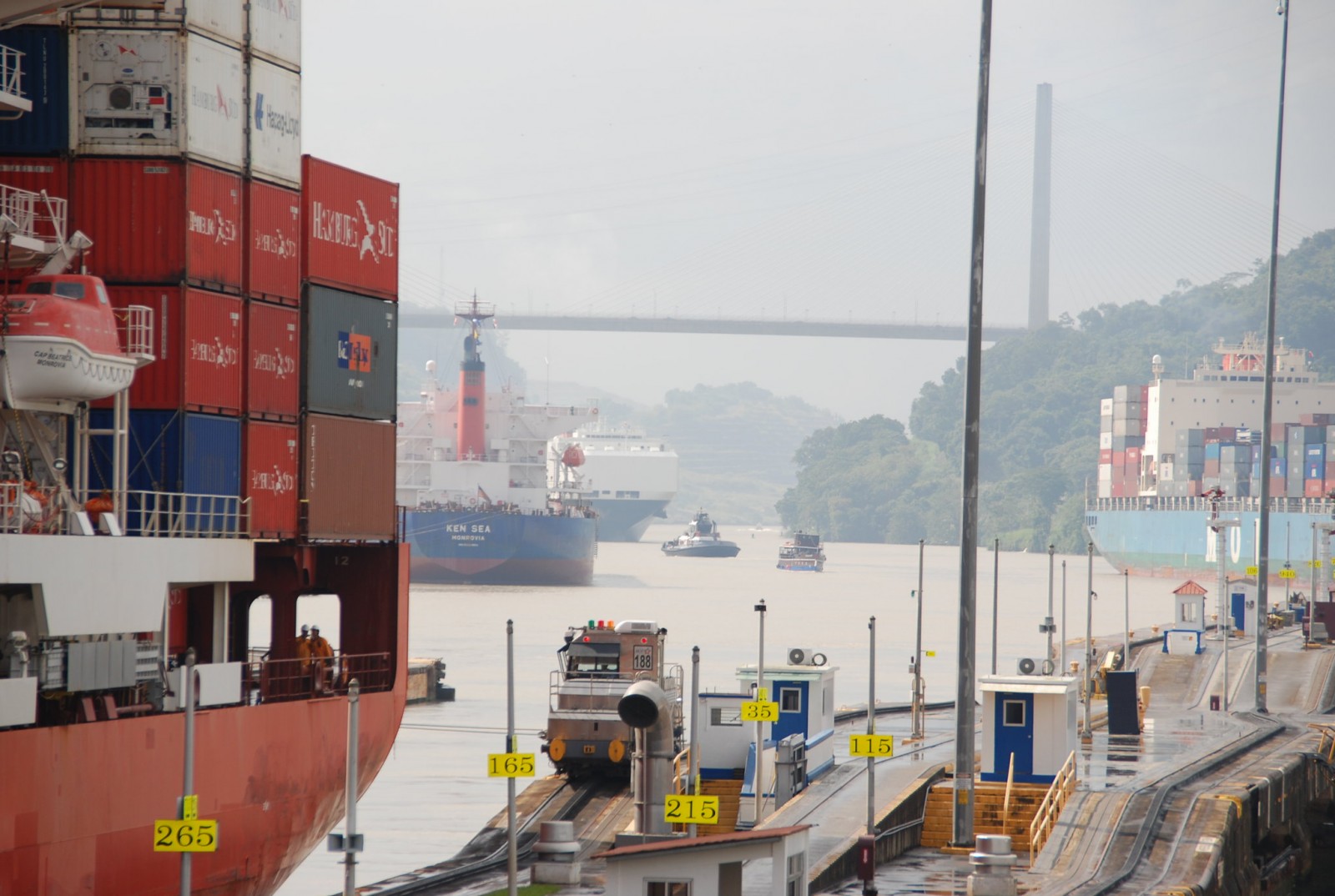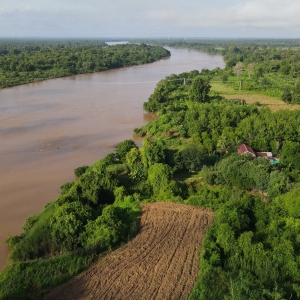
A line-up of ships in the Panama Canal locks. Image: Joe Ross
By Zara Gounden & Fraser Byers, Circle of Blue – July 12 2023
A deep drought is making the Panama Canal too shallow for its largest container ships. Restrictions on large vessels have been in force since March 2023 and recent advisories by the canal’s authority have regularly increased their severity. The Cabinet Council declared a state of environmental emergency in May.
The disruption, caused by serious declines in freshwater reservoirs that supply the canal, displays the vulnerability of global maritime trade to climate change. Artificial lakes Alajuela and Gatún are critically depleted after an unexpectedly long dry season. The canal’s locks, which include new and substantially larger chambers that opened in 2016, rely on freshwater to operate its locks. Approximately 200 million liters of water (52.8 million gallons) are needed for each vessel transit under normal conditions.
Since the Panama Canal opened in 1914, the interoceanic shortcut between the Atlantic and the Pacific has reduced shipping costs and fuel consumption. Last year, the canal supported roughly 6% of global maritime trade, including 40% of all U.S. container traffic.
The restrictions primarily apply to a new class of large vessels – called Neopanamax – which began entering the Panama Canal following the 2016 expansion project. Successors to the previous Panamax class, the larger ships are capable of transporting 2.5 times more cargo – a data point that the industry promotes as a step to reduce airborne carbon emissions. The average draft (vertical distance between the waterline and the bottom of the keel) of containerships in this class is around 15 meters or more than 49 feet. The drought-driven restrictions prohibit traffic through Neopanamax locks that exceed 13.41 meters or 44 feet.
The precise effect of the drafting limit on canal traffic has not been quantified but it is expected to be costly. Recent data from the Panama Canal Authority reports that Neopanamax ships accounted for over a quarter of total canal traffic in 2022.
Fraser is a reporting intern at Circle of Blue. Originally from Salt Spring Island, Canada, he is now a Davis Scholar pursuing dual degrees with UC Berkeley and Sciences Po Paris. Fraser is majoring in Environmental Economics and Policy, and Politics and Government – Specializing in the MENA region.




